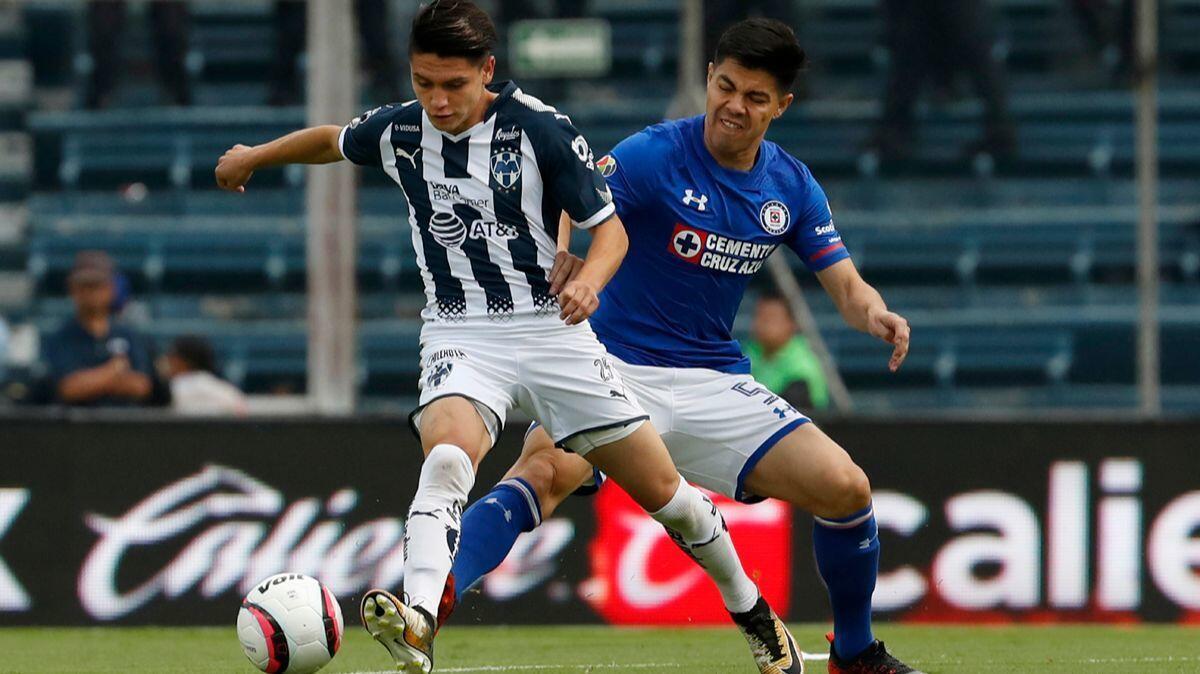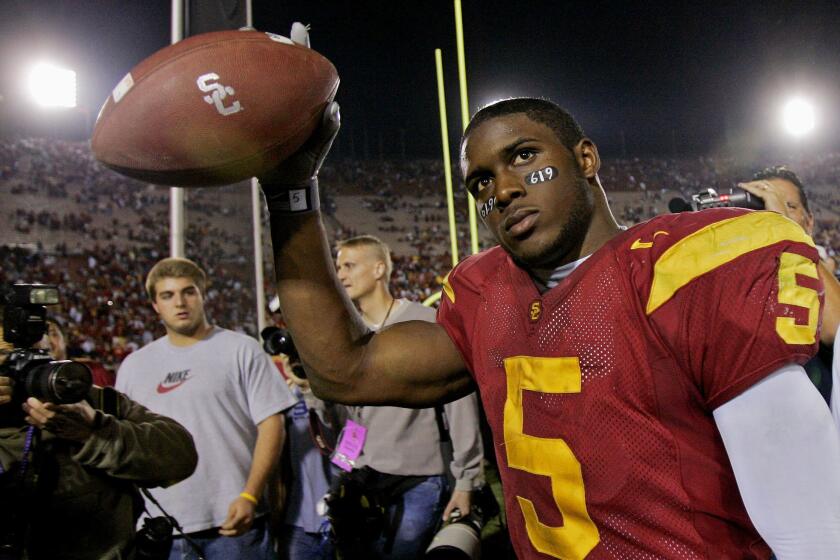Column: Jonathan Gonzalez’s decision shows the issues U.S. Soccer has with keeping dual-national players

On the surface, the most recent loss sustained by U.S. Soccer was as perplexing as the defeat that kept its national team from reaching the World Cup: American-born and American-raised Jonathan Gonzalez confirmed Tuesday that he will represent Mexico in international competition.
The decision shouldn’t have come as a surprise. About the only surprise here was that Gonzalez remained an American player for as long as he did. The fact the promising 18-year-old midfielder waited until now to switch his international allegiance speaks to how much the Santa Rosa native thinks of himself as an American.
Only this wasn’t about his cultural identity. This was about soccer.
Gonzalez is a technically gifted player with a modest physical build. Players with his qualities are valued in Mexico, as evidenced by his emergence as an all-league selection in the country’s first division. Players with his qualities are also valued in the United States — but not all the time.
There really wasn’t a choice for him to make. The choice was made for him.
Hugo Perez sighed.
A member of the U.S.’s 1994 World Cup team, Perez was the most skillful American player of his generation. As a youth national team coach, he searched for players who were similar to him, which resulted in him extending an invitation to a 13-year-old Gonzalez to train with the U.S.’s under-14 team.
“Disappointing,” said Perez, who now coaches for a youth club in the San Francisco Bay Area.
Disappointing because Gonzalez always said he wanted to play for the United States. Disappointing because U.S. Soccer should provide a more welcoming environment to players like Gonzalez, who was born to Mexican parents.
“I always brought this up when I worked for U.S. Soccer, but we need to have a better relationship with the Hispanic community,” Perez said. “That’s why Mexico has been coming here and picking up our players.”
The problems are two-fold.
The first issue is that of access. That majority of players chosen for youth national teams play for clubs that are part of the U.S. Soccer Development Academy, which was part of the federation’s effort to place the country’s top talent under a single organization. The system provides opportunities for the best players in the country to train and play against each other, but non-academy players can be overlooked.
Then there is the style of play. As much lip service as coaches pay these days to the importance of playing attractive and attacking soccer, American teams continue to prioritize physicality over technique, pragmatism over creativity. The mind-set can alienate players of a certain temperament.
“Mexico has a better style of play,” Perez said.
In the four years he spent as a U.S. youth national team coach, Perez tried to address these issues. He looked for players outside of the academy system, such as Gonzalez. Perez also championed a more offense-minded approach and searched for players who could play that style.
The U-14 camp to which Perez invited Gonzalez included another technically inclined player who would make his name for himself in the relatively near future: Christian Pulisic, the current No. 10 on the U.S. senior national team.
In retrospect, Gonzalez’s rise was something of an accident. He was invited to be part of the national player pool by an unorthodox coach who no longer works for U.S. Soccer. How he caught the eye of professional teams in Mexico was also somewhat unusual: through the Sueno Alianza soccer program that conducts showcase events for overlooked Latino players.
Compare that with his experience in Mexico. He signed with powerhouse Monterrey at 15. Only three years later, the team offered him an opportunity to be their starting holding midfielder. The Mexican federation heavily recruited him.
Would a Major League Soccer team have started a 5-foot-9 teenager in the middle of the park?
In a statement posted to his Twitter account to explain his decision, Gonzalez described Mexico as “the country that opened the doors for me.”
As news of Gonzalez’s switch spread, plenty of attention was directed at what U.S. Soccer did or didn’t do in the previous several months to ensure Gonzalez remained an American player. Some mentioned the failure to qualify for the World Cup. Others pointed to how Gonzalez was never offered an explanation about why he wasn’t called up by a national team for an exhibition in November.
Most likely, the truth is simpler: Gonzalez fits better in Mexico than he does here.
Perez is hopeful the dynamic will change. U.S. Soccer will elect a new president next month and Perez is optimistic it can lead to a shift in philosophy that will allow the United States to retain its top dual-citizen players.
And if it doesn’t?
“We’re going to lose more players,” Perez said.
Follow Dylan Hernandez on Twitter @dylanohernandez
More to Read
Get our high school sports newsletter
Prep Rally is devoted to the SoCal high school sports experience, bringing you scores, stories and a behind-the-scenes look at what makes prep sports so popular.
You may occasionally receive promotional content from the Los Angeles Times.






